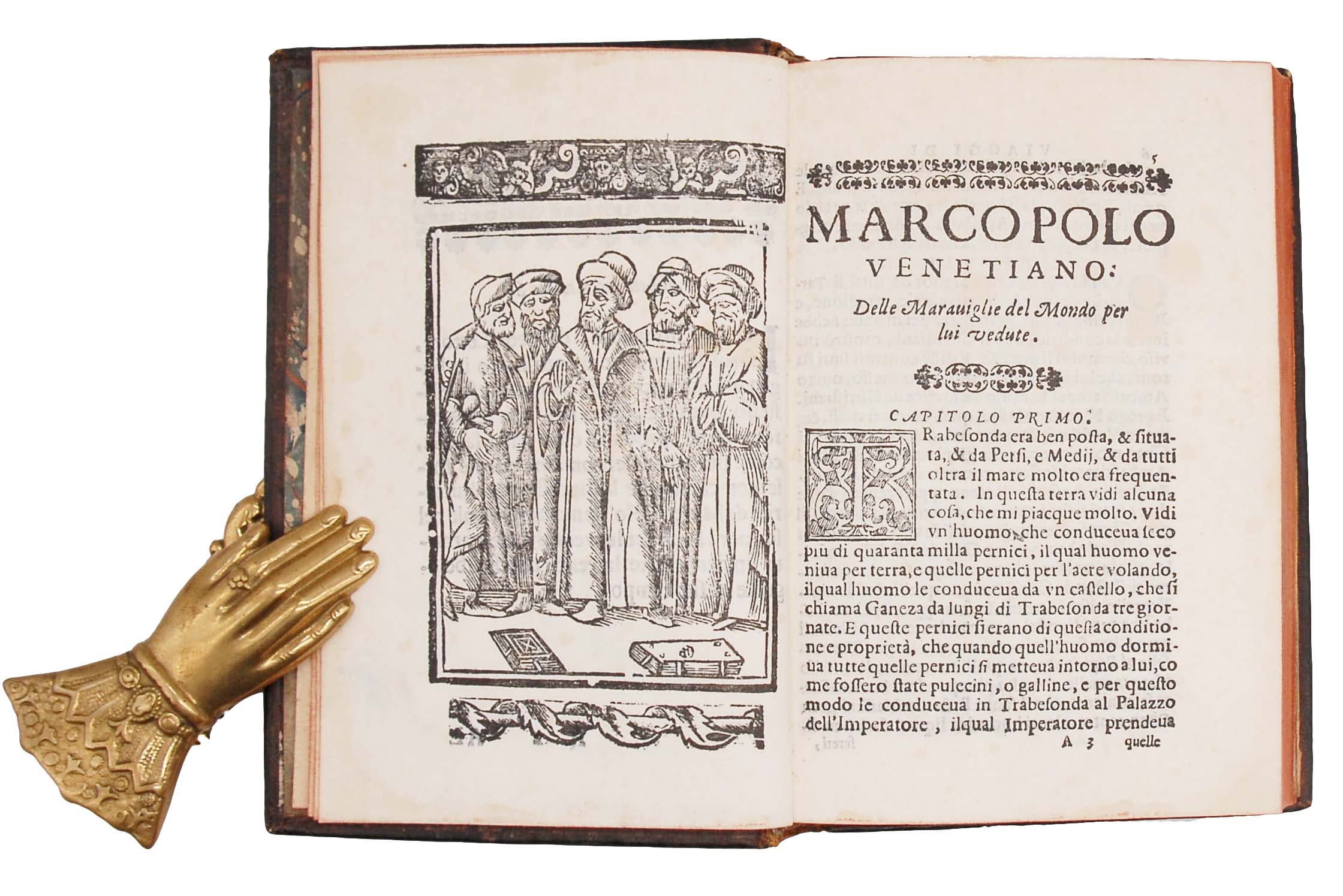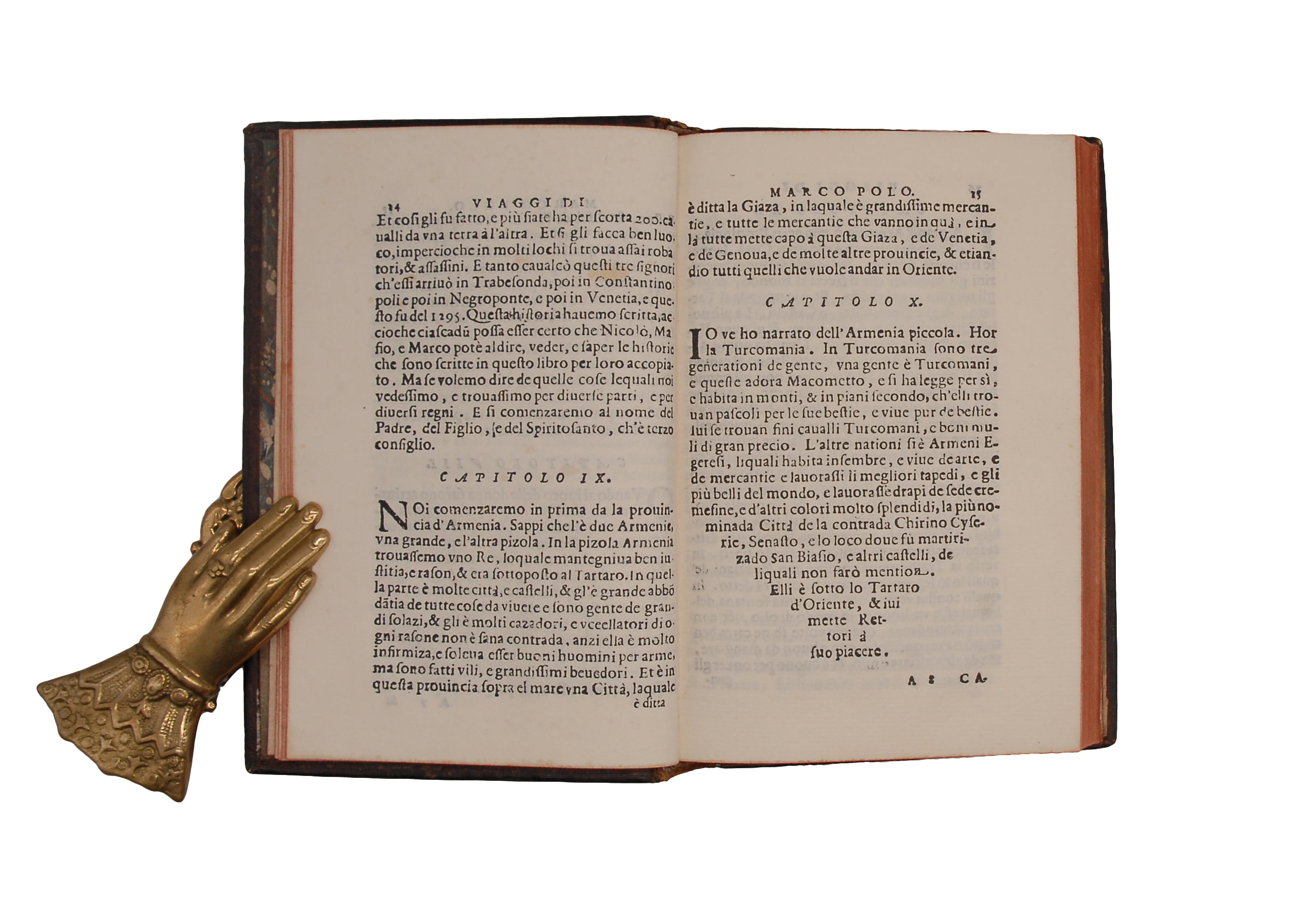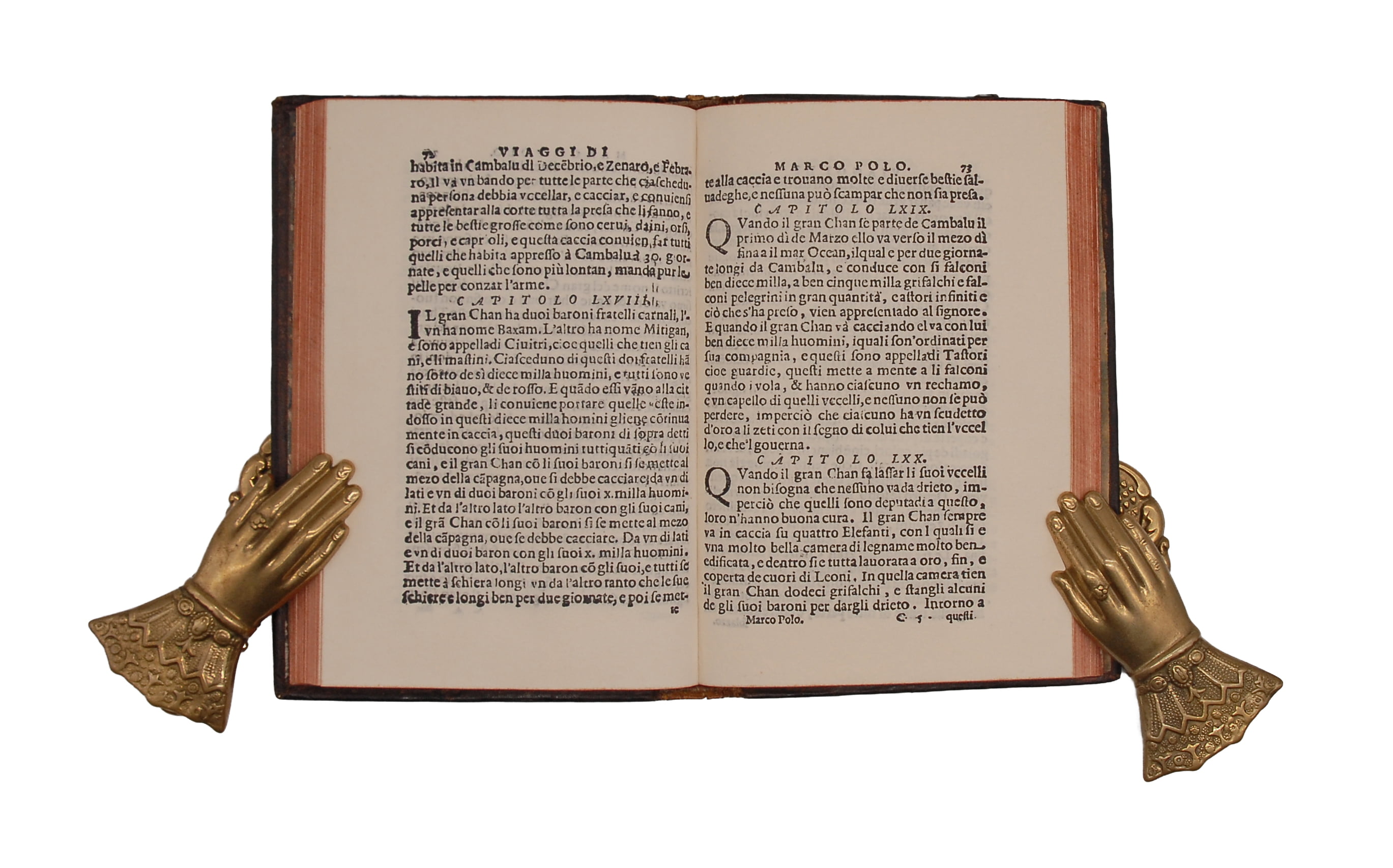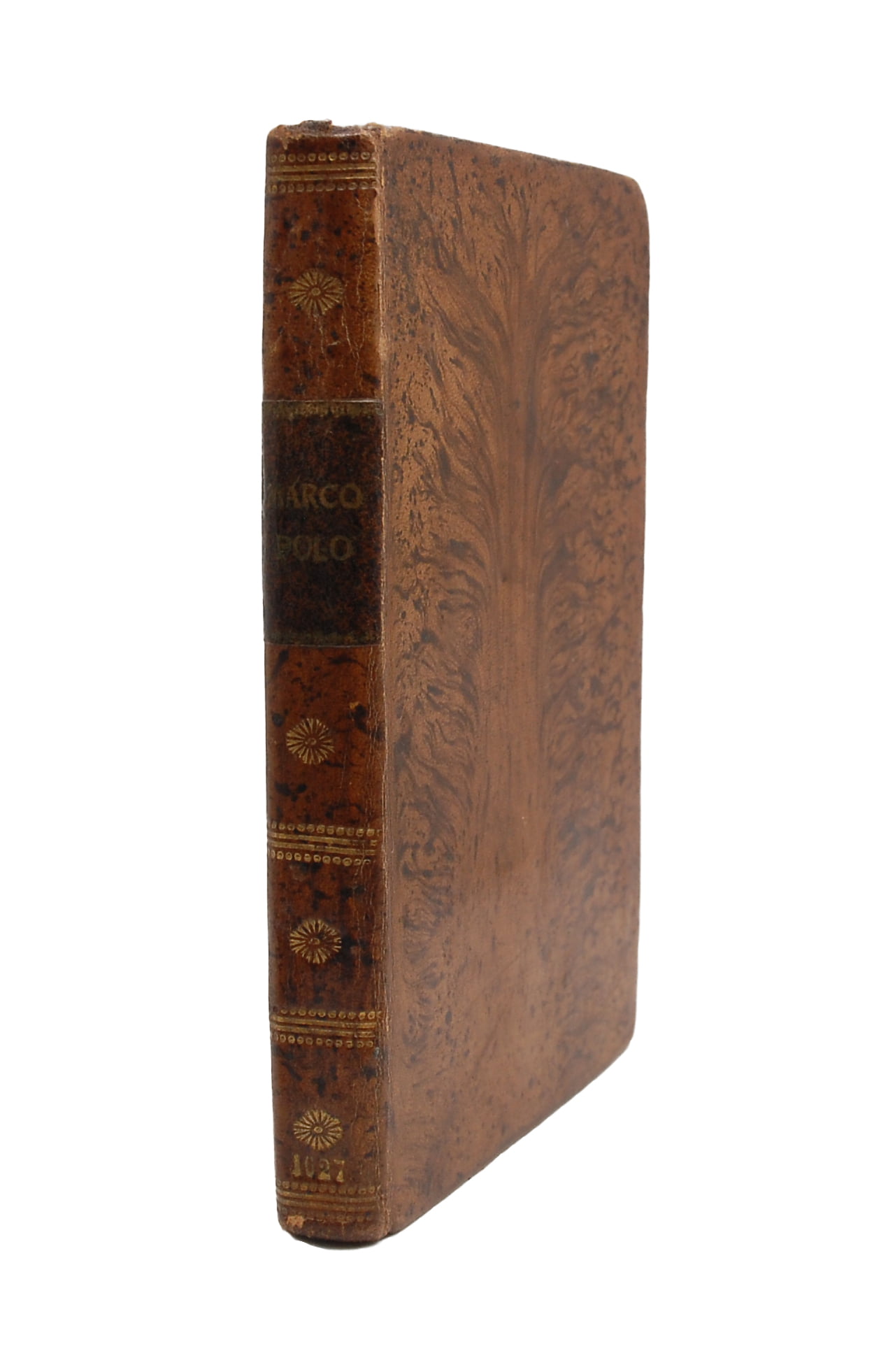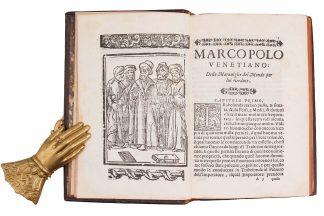POLO, Marco
Delle meraviglie del mondo per lui vedute … Di nuovo ristampato, & osservato l’ordine suo vero nel dire
Venice & Trevigi, Angelo Righettini, [1627?]£29,500.00
8vo, pp. 128, Roman letter, a little Italic. Printer’s woodcut device on title-page, 1 decorated initial, a couple of typographical ornaments, full page woodcut illustration representing Marco Polo wearing Mongol clothes and apparently doing a deal. Light age yellowing, diminishing foxing or spotting to first or last ll. A good, clean copy in c1800 tree calf, spine gilt, all edges red. Bookplate of Juan Carlo Ahumada (1890-1976), professor of gynaecology at the University of Buenos Aires, to front pastedown and shelf label to front endpaper, number (binding cost?) inked to rear pastedown.
One of the earliest editions, including a charming illustration of Marco Polo at the court of the Khan, of the well-known account of his travel in Asia (and particularly China), which was considered legendary by his contemporaries. Born in Venice (1254) from a family of merchants, in 1271, together with his father Niccolò and the uncle Matteo, he embarked on an epic journey across Asia, arriving in Peking, where he was in the service of Kublai Khan, the Mongolian Emperor, for several years. Returning to Venice in 1298, Marco was taken as a prisoner by Genoese after the battle of Curzola. It was in prison that he dictated his adventures to Rustichello da Pisa who first put them into writing in French, probably using Marco’s diary. After gaining his freedom Polo lived in Venice for the rest of his life (1324-25).
About 150 manuscript editions in different languages spread within a century, such as the ancient version in Venetian, only recently discovered (“Il Milione Veneto. Ms. CM 211 della Biblioteca civica di Padova di Marco Polo”, ed. by A. Barbieri & A. Andreose, 1999). However, the anonymous shorter Italian version, first printed in 1496 (Venice, Giovanni Battista Sessa) and reissued many times by Righettini and others, was the most widely read by the Mediterranean sailors. Better known as “Il Milione”, nickname of Polo’s family, this work showed similarities with the typical merchant’s manuals and used simple and concise language, including both first and second hand information on geography, customs and economies of unknown peoples and territories of Asia. The text opens with a short address to the reader and a chapter on the city of Trebizond. The first part is aimed at introducing Marco Polo’s family. There follow 145 chapters describing the Turkish lands, small and great Armenia, Mosul and Baghdad, the territories of Balkh and Badakhshan, the fertile Persian Empire and its desert, the Tatar Empire and the borders of India. The work especially focuses on the politics, cities and architecture of the Chinese empire. For instance, many pages are dedicated to the luxurious residences of the Great Khan and the numerous diplomatic missions undertaken by Polo on his behalf, such as the journey to the extensive province of Tibet. Some of the information in this book was incorporated in important maps of the later Middle Age, such as the Catalan World Map (1375). Above all, Marco Polo’s was the most influential travelogue on the Silk Road ever written in an European language depicting the enchanted Asia as a rich continent characterised by incredible resources, creatures and prodigies, which opened up the way for the arrival of thousands of Westerners in the centuries to come. It encouraged XV century traders interested in exotic products, such as silk, porcelain, jewellery and spices, to visit Asia and start new business, It also inspired missionary efforts from Europe, primarily by Franciscan, Dominican, or Jesuit missionaries. “This influence prevailed until the seventeenth century when the maps of Martini, the visits of the Jesuits and the work of de l’Isle and d’Anville superseded his accounts . . . As a story of adventure, an account of the experiences of one of the greatest travellers who ever lived, the book has remained alive” (“Printing & the mind of man”, p. 23).
Copies of this edition are recorded only at the University of Manchester, the Bibliotèque National de France, the Staatsbibliothek of Berlin and at the Jenks Library at Gordon College in the US. BL It., 695; Cordier, Sinica 1972. Adams and BM STC It. include only previous editions. Not in USTC. Not in Brunet or Graesse.In stock


